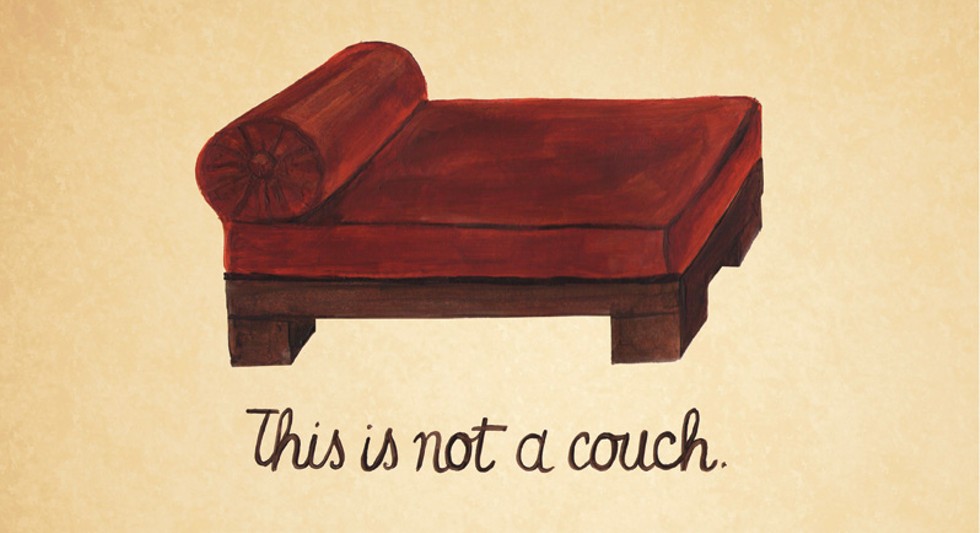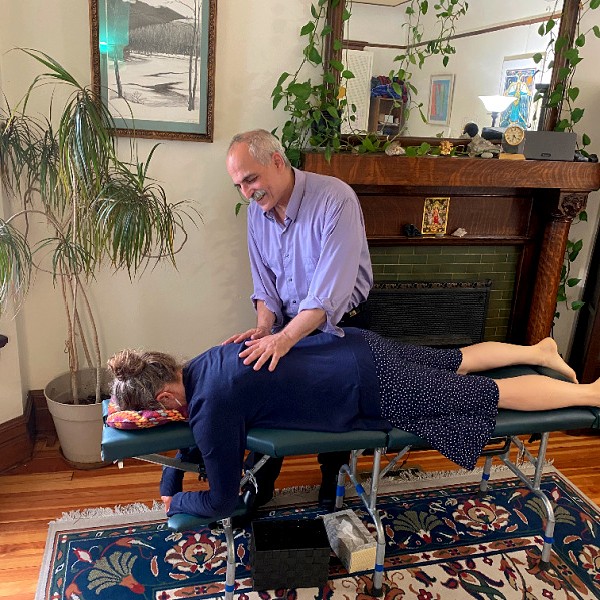When several life issues turned truculent in my early thirties, I took a friend's advice and sought a psychotherapist. To this day (many years later) I am still immensely grateful and in awe of the patient, wise, and compassionate therapeutic angels who helped me evolve a healthy way of looking at, and feeling about, my life and my deepest self. And while it is impossible to do justice here to the field of psychotherapy, I want to offer a few morsels about its basics and peek into what a few practitioners in our region are up to.
Psychotherapy is not just for those with serious mental illness: Many people need help with issues that are interfering with life's activities. "Often, the people I see are having trouble with a relationship—a marriage or partnership, with children, with a boss, with a landlord," says psychotherapist Bob Hausman, MA, director of the Woodstock Therapy Center and current president of the Hudson Valley Guild of Mental Health Professionals. Other reasons to seek psychotherapy include depression or anxiety (from mild to severe), phobias, trauma and PTSD (post-traumatic stress disorder), dealing with a change in family structure, problems at school or work, or conflict among peers.
Increasingly, people also want help feeling fulfilled: to find balance among the demands and desires of life, to gain a deeper understanding of themselves, to empower and enrich their dreams. It may be distress that initially leads them to a first appointment, but the discovery process from then on is often life changing.
Foundations and Diversity
A basic definition of psychotherapy, Hausman offers, is "a conversation between two people that is about one of them, the client. This is distinguished from a friendship, where presumably there is a reciprocal caring and balanced sharing. Having said that, from my point of view and that of many other therapists, the curative or ameliorative aspect of what happens is about the relationship between client and therapist."
Hausman cites a famous phrase of eminent psychologist Carl Rogers, whose perspective and research underlie the approach of many psychotherapists today: "The therapist has unconditional positive regard for the client." That manifests as a nonjudgmental and supportive presence from the therapist. "In that sense the helping part of it is about readjusting the client's perception of themselves," says Hausman, "which is a much more active approach and a major step forward from Freudian analysis, in which the analyst was supposed to be pretty much a blank screen and mostly listening."
Conversation is foundational to many psychotherapeutic approaches, which nonetheless vary in premise, emphasis, or technique. For instance, Hausman explains, "cognitive behavioral therapy is based on the premise that a person's issues or problems are rooted in inappropriate beliefs that they carry about themselves and the world, and that affect their behavior. So therapy is looking carefully at their belief systems. Psychoanalytic and psychodynamic approaches postulate that a person's history and experience in early life have a powerful influence on their adjustment as an adult, and that it's worth looking at those things."
As other examples, narrative therapy emphasizes that a person's life and way of behaving are related to the story they have developed about themselves within their culture; play therapy draws on nonverbal creative expression (and is not just for kids!); body-centered therapy uses postures, movements, and sensations in self-discovery and healing. There are several other approaches, including group methods for families, coworkers, or people affected by a similar issue.
Many psychotherapists have trained in more than one approach, and bring wisdom and perspective from their own life journeys as well. For instance, Irene Humbach, LCSW, combines traditional with bioenergetic therapy and Kabbalistic spirituality. "It's really all about a holistic approach to life, seeing everything as connected—body, mind, spirit. If we have an experience that has amotionally effected us, it will also be held in our body and spirit. If it gets blocked in one area, it will come out somewhere else. If you follow it in your mind/body/spirit and allow it to flow and move, it is a more natural healing process." A big part of healing, she says, is accepting our so-called negative parts. "We tend to push away the things we don't like, or try to transcend our personal issues by getting to a different spiritual mentality about it. If we would stop resisting and invite everything in, something actually happens that brings us into more of a whole state."

















